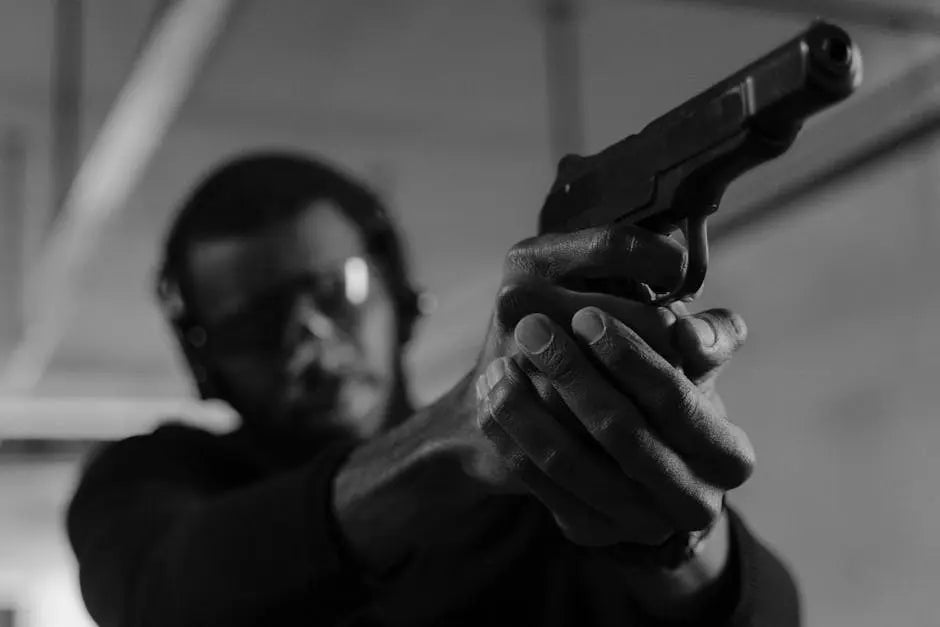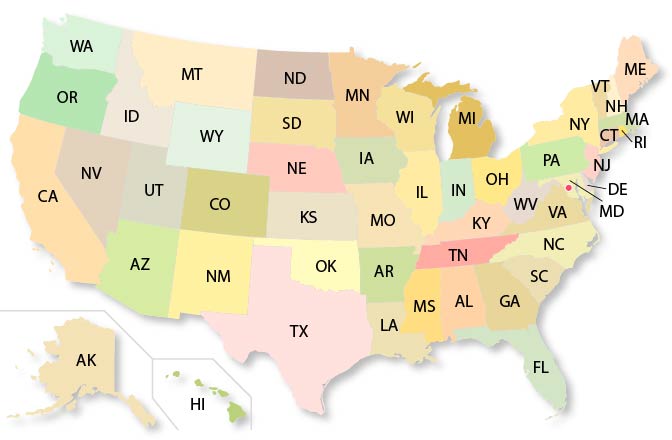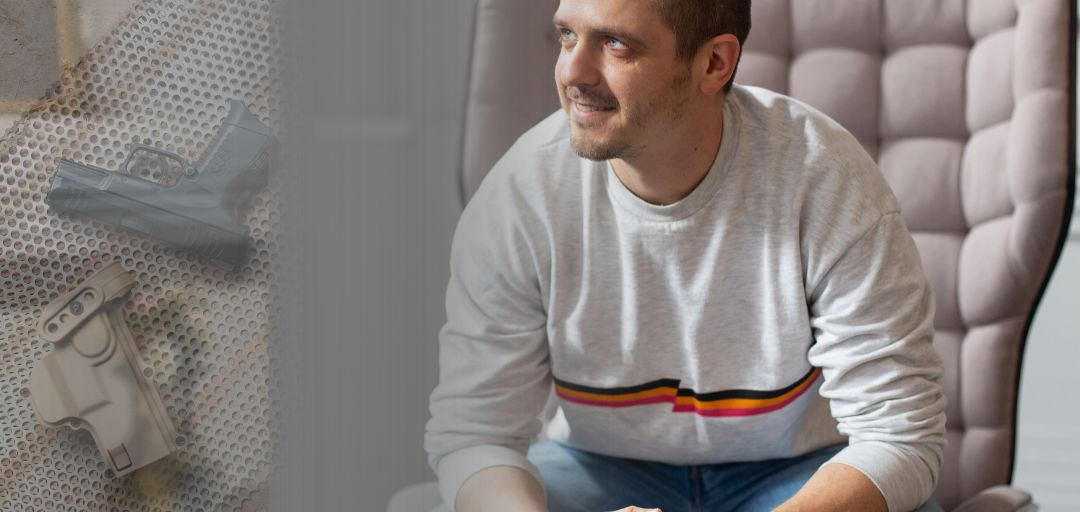Practicing your shooting skills is essential whether you are a beginner or an experienced marksman. Choosing the right pistol targets can make a significant difference in the effectiveness of your practice sessions. Beginners are often recommended to start with paper targets to develop basic shooting skills. Selecting the right targets can bring greater satisfaction and improvement to your shooting practice. This blog will guide you through the different types of shooting targets available and help you determine which ones are best for your training needs.
Understanding Different Types of Pistol Targets
There are a variety of pistol targets available, each designed for different training purposes. From paper and cardboard targets to steel and electronic ones, it’s important to know what each type offers. Paper and cardboard targets are typically used for accuracy and zeroing practice due to their practicality and ease of use.
Before diving deeper into the specifics, let’s recognize that every type of target has its unique features. For instance, paper targets are generally affordable and versatile, providing basic bullseye patterns that are great for precision practice. High-quality paper targets are often print with vivid colors for better visibility. The shape of the target, such as silhouette or bullseye, can also affect training by simulating real-life scenarios or focusing on specific skills. On the other hand, steel targets offer immediate auditory feedback each time you hit them, making them suitable for more engaging practice sessions and featuring durability for repeated use.
Interestingly, some targets are designed for more advanced training. Reactive and interactive targets can move or change color when hit, providing a more dynamic shooting experience to test your reflexes and shooting accuracy under different scenarios. Some of these targets also feature self-healing properties, allowing them to withstand multiple hits and extend their lifespan.
Paper and Cardboard Targets: Affordable and Versatile
Paper and cardboard targets are the most common types. They’re cost-effective, making them suitable for frequent practice. They come in various designs, including bullseye, silhouette, and grid patterns. Paper targets are typically best for indoor or calm outdoor conditions. Cardboard targets are often made from sturdy cardboard stock, which increases their durability.
One big advantage of paper targets is the ease of tracking your progress. With bullseye targets, you can easily measure your shooting groups and adjust your aim accordingly. Additionally, these targets are highly portable and can be set up virtually anywhere you have a safe shooting area. Paper and cardboard targets are also easy to buy at most sporting goods stores or online.
Furthermore, incorporating anatomical targets adds a layer of realism to your training. By simulating real-life scenarios and focusing on vital areas of the human anatomy, these targets help shooters develop accurate shot placement skills that are essential in high-pressure situations. This not only enhances the training experience but also prepares shooters for more practical applications of their skills. For more detailed information, check out GunZees paper anatomical targets.
Moreover, cardboard targets offer more durability than paper ones and can withstand multiple hits before needing replacement. It’s quick and simple to replace paper and cardboard targets during practice, allowing for uninterrupted training sessions. They’re an excellent choice for shooters who prefer to practice with more lifelike silhouettes, which can aid in law enforcement and self-defense training scenarios.
Steel Targets: Durable and Engaging
Steel targets offer auditory feedback when hit, providing immediate satisfaction. Steel gong targets, in particular, produce a loud ringing sound that enhances shooting practice with clear auditory feedback. They are also highly durable, making them a great long-term investment. Steel targets are durable and can withstand thousands of rounds without significantly losing shape or function, making them a cost-effective choice in the long run. Their ability to withstand repeated shots makes them ideal for outdoor ranges and designed to endure the rigors of competition shooting.
One notable brand in the steel target industry is AR500 Target Solutions, known for their high-quality steel targets made from AR500 and AR550 steel. These targets can sustain heavy and frequent use, making them perfect for both recreational shooters and professional training.
Safety is paramount when using steel targets. Always ensure a safe shooting distance and proper mounting to avoid ricochets. Properly angled steel targets minimize the risk of ricochet by directing bullet fragments downward. Steel targets can be hung for versatile shooting setups. Hanging targets or using target stands designed to act as absorbers of impact and provide stability are advisable setups to enhance safety and maximize the longevity of your targets.
Reactive and Interactive Targets for Enhanced Training
Reactive targets, such as those that move or change color when hit, provide immediate feedback and add an extra layer of engagement to your practice. Using a reactive target makes shooting practice more fun and engaging, as you get real-time response with every shot. Some reactive targets are designed for shooting games, simulating hunting or competition scenarios to further enhance the experience. Self-healing targets are made from durable materials that automatically close after a bullet passes through, reducing ricochet risk.
Dueling trees are a popular type of reactive target that feature spinning paddles. These trees allow two shooters to compete head-to-head, adding a competitive element and making practice sessions more exciting.
For instance, the self-healing polymer targets from Throom Targets provide a safer alternative to steel targets by eliminating ricochet risks. These targets react to hits and recover quickly, allowing continuous shooting without the need for frequent replacements.
Another benefit of reactive targets is their versatility. They can be used for a range of shooting drills, from basic accuracy practice to advanced tactical training. Whether you’re simulating moving targets, playing a shooting game, or practicing quick draw techniques, reactive targets can significantly enhance your shooting skills.
Electronic Targets for High-Tech Training
Electronic targets are becoming increasingly popular. They are easy to set up and use, making them convenient for shooters of all experience levels. These targets provide instant digital feedback and can track your progress over time. Electronic targets are excellent for precision shooting and competitive training, and can be used for both pistol and rifle practice.
These advanced systems often come with mobile apps or computer software that record your shooting metrics, enabling detailed analysis and improvement plans. By using electronic targets, shooters can gain insights into their performance that traditional targets can’t provide.
Furthermore, electronic targets often feature varying difficulty levels and scenarios that help shooters prepare for real-world situations. They are ideal for serious shooters aiming to compete or those who simply want to take their training up a notch.
Specialty Targets and Equipment for Advanced Practice
For shooters looking to elevate their training regimen, specialty targets and advanced equipment offer a dynamic way to challenge your skills and keep your practice sessions engaging. These shooting targets are designed for those who want to go beyond basic paper targets and cardboard targets, providing realistic scenarios and instant feedback that are essential for tactical training, long range shooting, and competition preparation.
Specialty targets come in a variety of forms, each designed to enhance specific aspects of your shooting. Dueling trees, for example, feature multiple steel paddles that swing from side to side when hit, allowing for competitive drills and rapid target transitions. Spinning targets add an extra layer of challenge by moving unpredictably after each shot, testing your accuracy and speed under pressure. Gong targets, made from durable steel, emit a satisfying ring with every hit, making them ideal for long range shooting and providing clear, instant feedback. Knock-down targets fall when struck, simulating real-world engagement and giving shooters a tangible sense of accomplishment.
Steel shooting targets are a staple among specialty options, prized for their ability to withstand thousands of rounds without losing their shape or function. This durability makes them a cost-effective investment for shooters who train frequently or participate in competitions. Reactive shooting targets, including self-resetting and color-changing designs, further enhance your practice by providing immediate visual or auditory cues, helping you quickly assess shot placement and adjust your aim.
When selecting specialty targets, consider your specific training goals. If you’re focused on tactical training or improving shot placement under stress, reactive targets and dueling trees are excellent choices. For those interested in long range shooting, steel gong targets offer the durability and feedback needed to refine your skills with rifles or high-powered pistols. Always prioritize safety by choosing targets designed to minimize ricochet risk and by following manufacturer guidelines for setup and use.
To get the most out of your specialty targets, invest in sturdy target stands and accessories that make setup easy and transportation convenient. Many advanced target systems are designed for quick assembly and breakdown, allowing you to adapt your training environment whether you’re at a professional range or setting up in your own backyard. Look for features like weather resistance, portability, and compatibility with different types of firearms to maximize the versatility of your equipment.
Staying informed about the latest products and innovations can also enhance your shooting experience. Many manufacturers offer email updates, discounts, and exclusive deals on new specialty targets and equipment. Signing up for these updates ensures you’re always aware of the best options to enhance your training.
In summary, incorporating specialty targets and advanced equipment into your shooting practice is a smart way to boost your skills, increase engagement, and add a fun, competitive edge to your sessions. Whether you’re aiming to improve your shot placement, prepare for competition, or simply enjoy a more challenging and rewarding range day, specialty shooting targets are designed to help you reach your goals. Visit your local range or shop online to explore the latest specialty targets, and take your shooting practice to the next level.
Choosing the Right Target Based on Your Training Goals
Your choice of target should align with your training objectives. Are you focusing on improving accuracy, speed, or tactical skills? Identifying your goals will help you select the most appropriate targets for your needs. Here are some tips: consider what skills you want to develop, the type of firearm you use, and the environment in which you shoot.
For instance, beginners aiming to enhance their accuracy might find pie chart targets beneficial. These targets help diagnose and correct shooting errors, making them a valuable tool for new shooters to shoot at while building confidence and reducing worry about accuracy and performance.
On the other hand, law enforcement professionals may need to focus on tactical training, for which reactive or steel targets would be ideal. These targets are designed to be shot at during drills that simulate real-life engagements and help improve response under pressure.
Safety Considerations When Using Pistol Targets
Safety is paramount when practicing shooting. Always use targets appropriate for your shooting range and maintain a safe distance. Additionally, ensure you have the correct backstop to prevent any accidental injuries.
When selecting a target stand, consider options that are easy to break down for transportation to and from the range. Some target stands are especially handy for quick setup and portability, making them convenient for outdoor shooting sessions.
One significant aspect of shooting practice is target identification. Ensuring you know what you are shooting at prevents accidental injuries or tragic mistakes. A flashlight or other light sources could be beneficial for clear target identification, especially in low-light conditions.
Also, always adhere to the safety instructions provided by target manufacturers. Some targets, like steel ones, have specific guidelines to prevent ricochets and ensure a safe shooting experience. By incorporating these practices, shooters can enjoy effective and safe training sessions.
Setting Up Your Target for Safe and Effective Practice
Setting up your shooting targets correctly is crucial for both safety and getting the most out of your training regimen. Whether you’re using paper targets for basic shot placement, reactive shooting targets for instant feedback, or steel shooting targets for long range shooting and tactical training, the way you set up your target can make a big difference in your practice sessions.
Start by selecting the right type of target for your goals. Paper targets are a convenient and cost-effective choice for honing your aim and tracking progress. Reactive targets, on the other hand, provide instant feedback, making your shooting practice more engaging and helping you quickly identify areas for improvement. Steel targets are designed to withstand thousands of rounds, making them ideal for challenging drills, long range shooting, and tactical training scenarios. Cardboard targets offer a budget-friendly option that’s durable enough for repeated use and great for practicing shot placement.
Equally important is choosing a sturdy and safe target stand or hanger. Options like a dueling tree or a heavy-duty steel stand are designed to handle the impact of multiple rounds and minimize the risk of ricochets. Make sure your stand is set up on stable ground and is positioned to keep both shooters and bystanders safe from stray shots or ricochets.
Always set your targets at a safe distance, appropriate for the type of firearm and ammunition you’re using. The shooting range should be clear of obstacles, and everyone present should wear proper safety gear, including eye and ear protection. Having a spotter or shooting buddy can enhance safety and provide valuable feedback on your shooting technique.
Consider the type of shooting you’ll be doing. For pistol practice, reactive targets can help you improve your aim and shot placement with immediate feedback. For rifle shooting, steel targets are built to withstand the higher impact of rifle rounds and are perfect for long range engagement.
Don’t forget to follow all local regulations and range rules when setting up your targets. This may include obtaining permits, adhering to safety protocols, and ensuring your setup is compliant with range guidelines.
Choosing the Ideal Pistol Targets for Effective Practice
Practicing with the right pistol targets can help you improve your shooting accuracy and overall skills. By understanding the different types of targets and considering your practice needs, you can make an informed decision that will enhance your training experience. For the best results, consider purchasing quality targets from reputable sources. Clay pigeons, for example, are inexpensive and easy to purchase at stores like Amazon, Walmart, or gun stores, making them accessible options for training and recreational shooting. Some ranges or manufacturers even offer free sample targets for first-time visitors, so be sure to ask about these opportunities. Visit your local shooting range or store to see various target options in person and get expert advice. Remember, consistency and the right tools are keys to becoming a proficient shooter.



